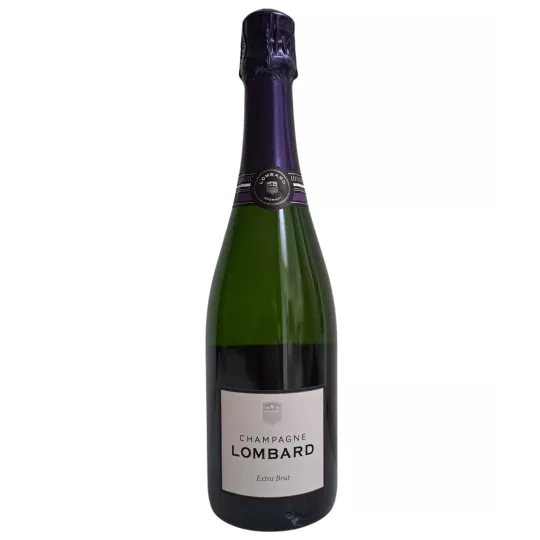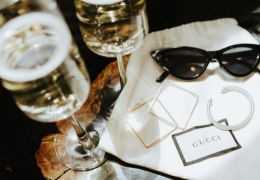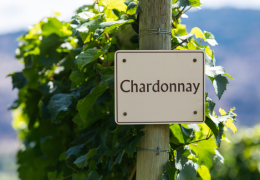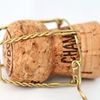Champagne Valentin Leflaive embodies the alliance between Burgundian heritage and Champagne excellence. Thanks to a...

Free delivery for purchases over € 210 in the E.U.
Club We Love Bubbles: Collect points with every purchase
| ❤️ CLUB We Love Bubbles: 100 € spent = 20 loyalty points |
| ❤️ CLUB We Love Bubbles: €100 spent = 20 loyalty points |
| ❤️ CLUB We Love Bubbles: €100 spent = 20 loyalty points |

Champagne Valentin Leflaive embodies the alliance between Burgundian heritage and Champagne excellence. Thanks to a...

Champagne Petit et Bajan, founded in 2008 by Richard Petit and Véronique Bajan, embodies the alliance of two...

Champagne Napoléon, founded in 1825, embodies the perfect blend of family tradition and imperial prestige. Crafted...

Champagne Lebeau-Batiste, a family-owned winery in Chavot-Courcourt, embodies the combination of artisanal tradition...

Champagne Telmont, founded in 1912 in Damery, embodies the perfect blend of family heritage and innovation. Its...













Champagne is an iconic drink associated with moments of celebration and joy. But did you know that there are different types of champagne, each offering a unique taste experience? In this article, we are going to explore the different categories of champagnes, their distinct characteristics and their ideal use. Whether you are preparing a formal dinner, a casual evening with friends or a sweet aperitif, there is a type of champagne that will perfectly match every occasion.
Brut champagne is the most commonly consumed type of champagne. It is dry and has a low residual sugar content. The dominant flavors are those of fresh fruit, with lemony notes and a slight acidity. Brut champagne is versatile and suitable for many occasions, whether celebrating a wedding, a birthday or simply to brighten up an evening with friends. Its freshness and liveliness make it an ideal choice to accompany seafood, sushi or light dishes.
Demi-sec champagne is slightly sweeter than brut. It offers a richer palette of flavors, with notes of ripe fruit, honey and hazelnuts. Demi-sec champagne is perfect for occasions when you want a little more sweetness and roundness in the tasting. It goes particularly well with poultry dishes, soft cheeses or fruit desserts.
Sweet champagne, also called Sec champagne (Dry), is the sweetest champagne of all. It presents intense flavors of candied fruit, caramel and brioche. Sweet champagne is ideal for sweet aperitifs or to accompany rich desserts, such as fruit pies or chocolate cakes. Its balanced sweetness and delicate effervescence make it a real delicacy to savor.
When it comes to formal celebrations such as weddings, award ceremonies or important anniversaries, brut champagne is the preferred choice. Its freshness and vivacity underline the importance of the event, while its dry and balanced profile suits a wide range of palates. Whether you're raising your glass to toast or enjoying a glass during the meal, brut champagne will bring a touch of sophistication and elegance to every moment.
When hosting a casual dinner with friends or family, demi-sec champagne offers a slightly sweeter alternative that will appeal to all in attendance. Its richer flavor palette and delicate aromas make it a versatile choice to accompany a variety of dishes. Whether you serve poultry-based dishes, mixed salads or soft cheeses, demi-sec champagne will bring a touch of subtle sweetness that will delight your taste buds.
When you are hosting a sweet aperitif or want to enjoy a sumptuous dessert, sweet champagne is the perfect answer to your gourmet cravings. Its pronounced sweetness and complex flavors of candied fruit and caramel make it a real delight to accompany rich desserts. Serve it chilled to fully appreciate its delicacy and depth of flavor.
In conclusion, choosing the right type of champagne for the occasion is key to creating a memorable tasting experience. Brut champagne is ideal for formal celebrations, bringing freshness and liveliness to every glass. Demi-sec Champagne offers a touch of sweetness for casual dining, pairing with a variety of dishes. As for sweet champagne, it is ideal for sweet aperitifs and gourmet desserts. Explore the different champagne brands and houses to discover the variations of each type and find the one that perfectly suits your taste and the occasion.
Q: What are the different types of champagne?
A: The different types of champagnes include Brut, Extra Brut, Sec, Demi-Sec, Doux, Millésimé, Non-Vintage, Rosé, Blanc de Blancs and Blanc de Noirs.
Q: What distinguishes a brut champagne from a demi-sec champagne?
A: The difference is in the residual sugar content. Brut champagne is drier with less residual sugar, while demi-sec champagne is slightly sweeter.
Q: What is a vintage champagne?
A: A vintage champagne is made from grapes harvested in a single exceptional year. It reflects the characteristics of that specific year and is often considered a premium champagne.
Q: What is the meaning of "white of whites" and "white of blacks"?
A: Blanc de blancs" means that champagne is made exclusively from white grapes, usually Chardonnay. "Blanc de noirs", on the other hand, is made from black grapes, mainly pinot noir and/or Pinot Meunier.
Q: How do I choose the right champagne for a special occasion?
A: It is recommended to consider personal taste and champagne sweetness preferences. For light dishes, brut is often preferred, while for desserts, a demi-sec or sweet champagne may be more suitable.
Q: What are the differences between a brut champagne and an extra brut champagne?
A: The main difference is the amount of residual sugar. Brut Champagne has a slightly higher sugar content than Extra Brut Champagne, giving it an extra subtle sweetness.
Q: What makes a rosé champagne different from others?
A: A rosé champagne is distinguished by its pink color, obtained either by a short maceration of the black grapes before fermentation, or by the assembly of red wine with white wine during the creation of the champagne.
Q: What are the main champagne producing regions?
A: The main champagne producing regions are Montagne de Reims, Vallée de la Marne, Côte des Blancs and Côte des Bar, located in the Champagne region of France.
Q: What are the characteristics of a non-vintage champagne?
A: A non-vintage champagne is made from a blend of grapes from different years, creating a constant and characteristic style of the champagne house.
Q: How do I appreciate and serve champagne correctly?
A: To fully appreciate champagne, it is recommended to serve it chilled, between 8 and 10 degrees Celsius. Use champagne flutes to preserve the bubbles and allow optimal tasting.

 A Story Of Friendship: Champagne Pol Roger and Sir Winston Churchill
A Story Of Friendship: Champagne Pol Roger and Sir Winston Churchill Champagne-based cocktails
Champagne-based cocktails Champagne rosé
Champagne rosé Serve a good champagne
Serve a good champagne Where to buy Deutz champagne ?
Where to buy Deutz champagne ?Follow us